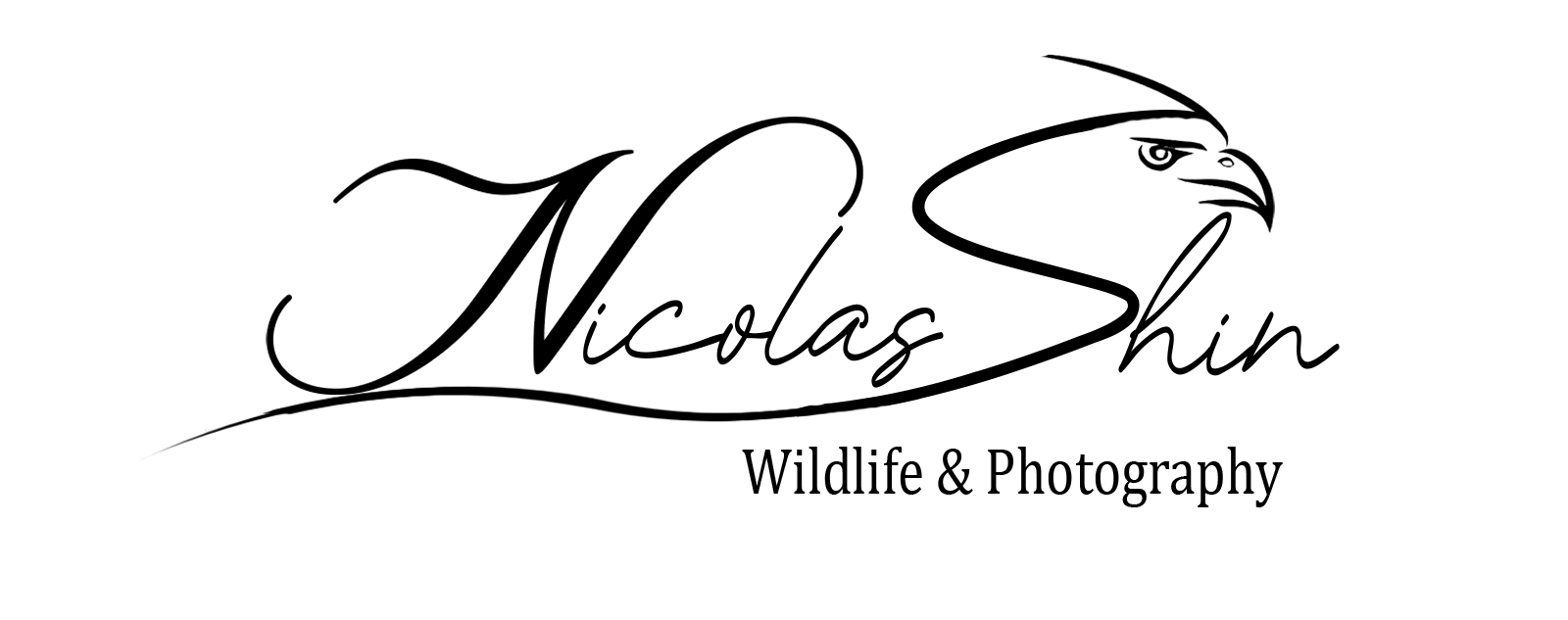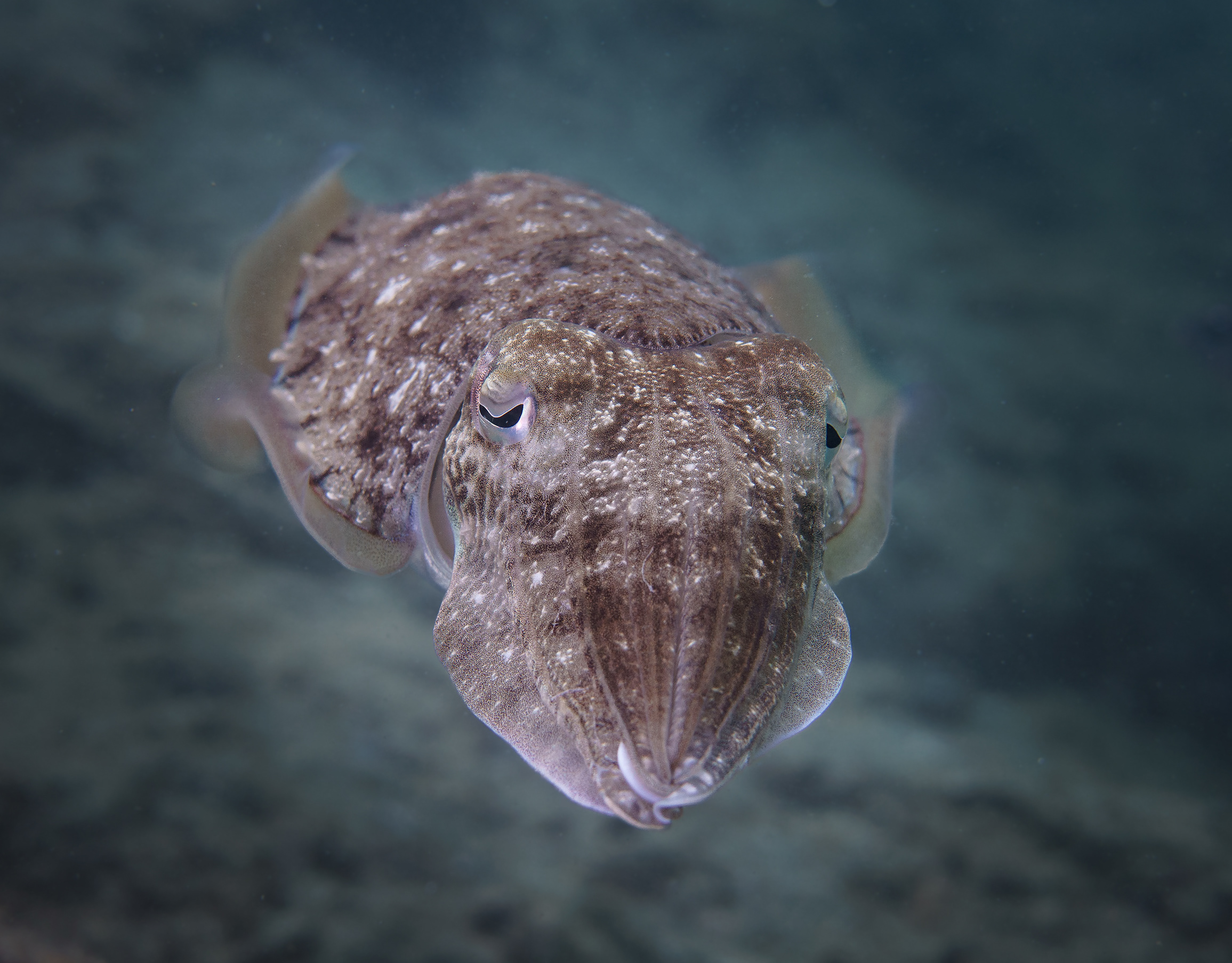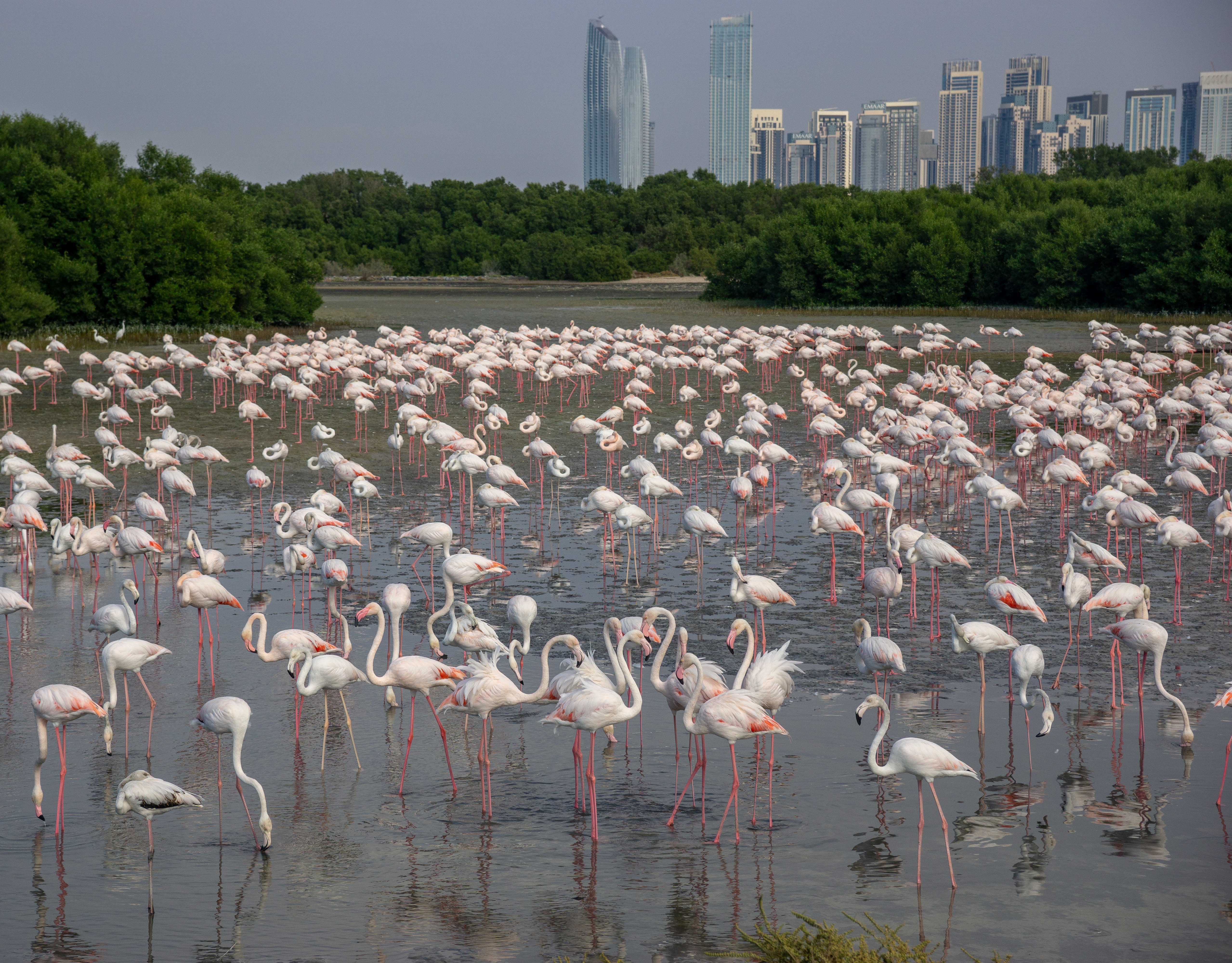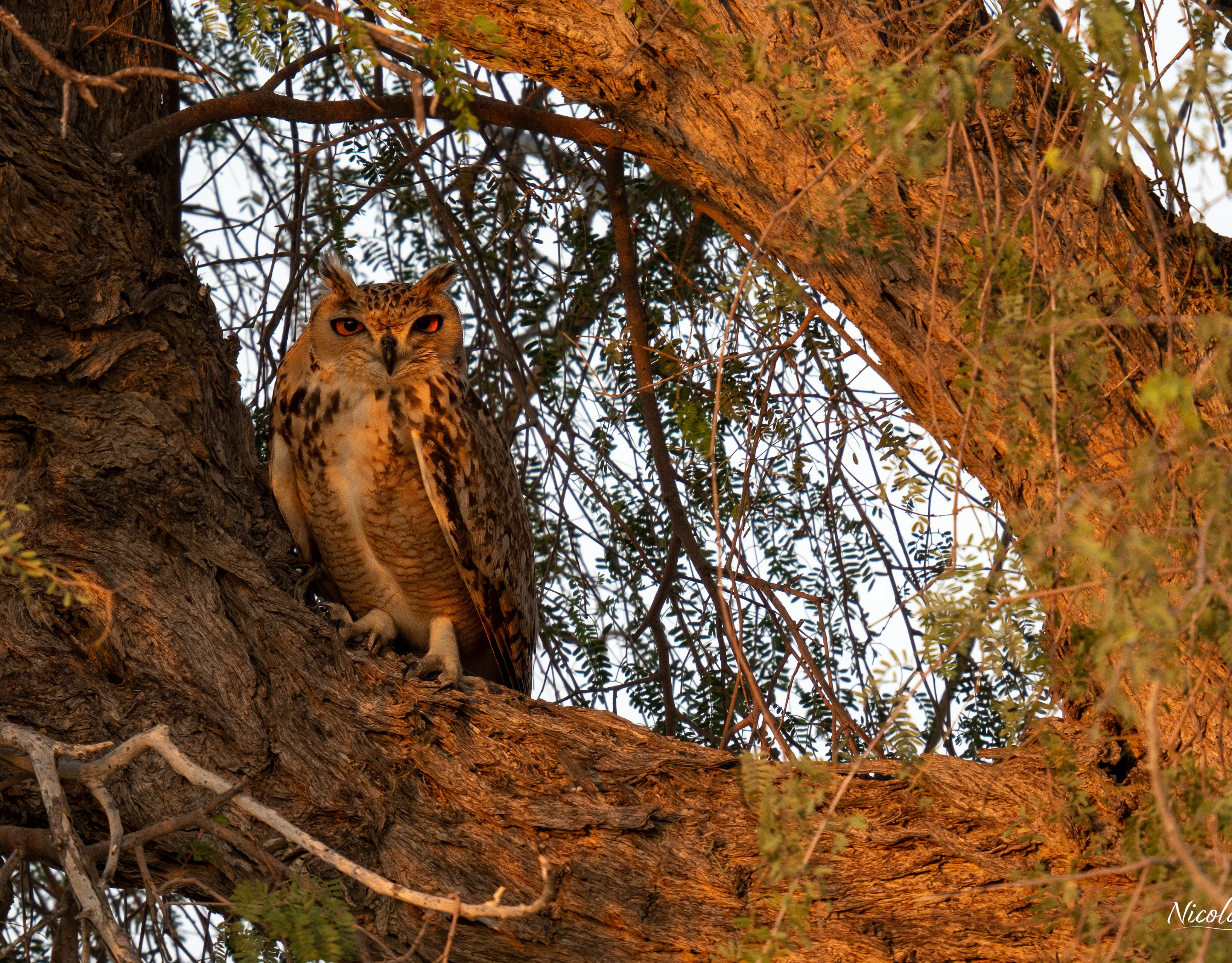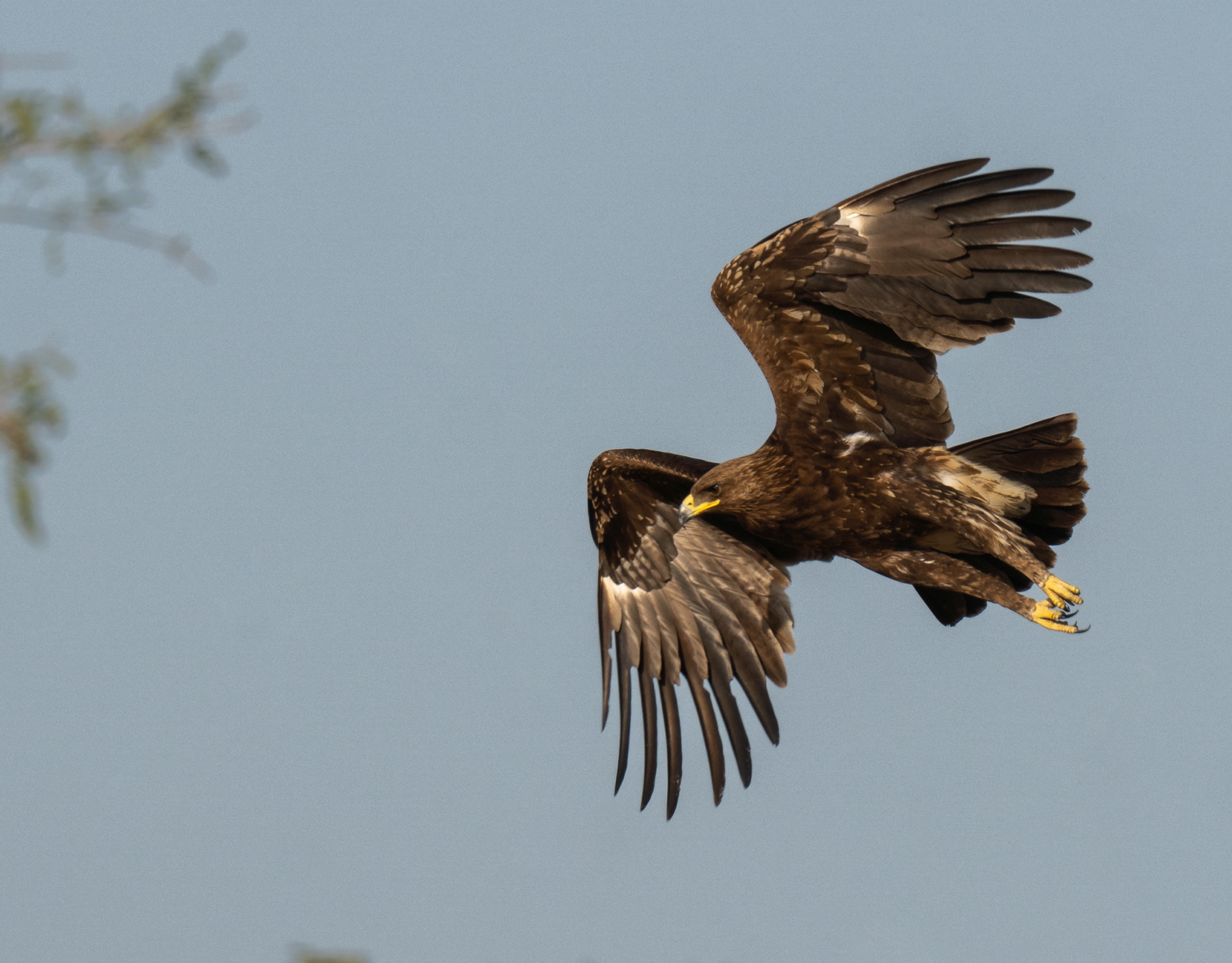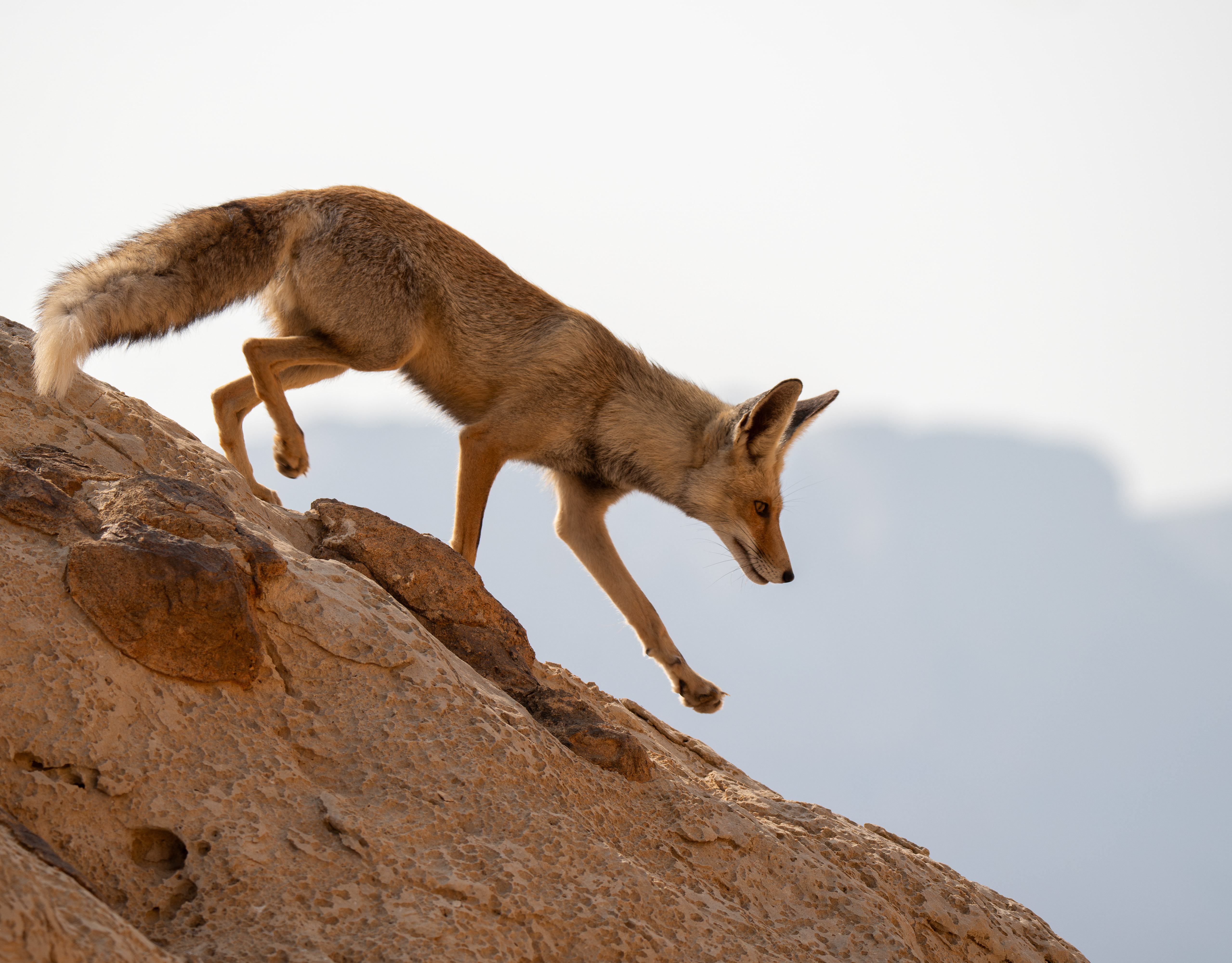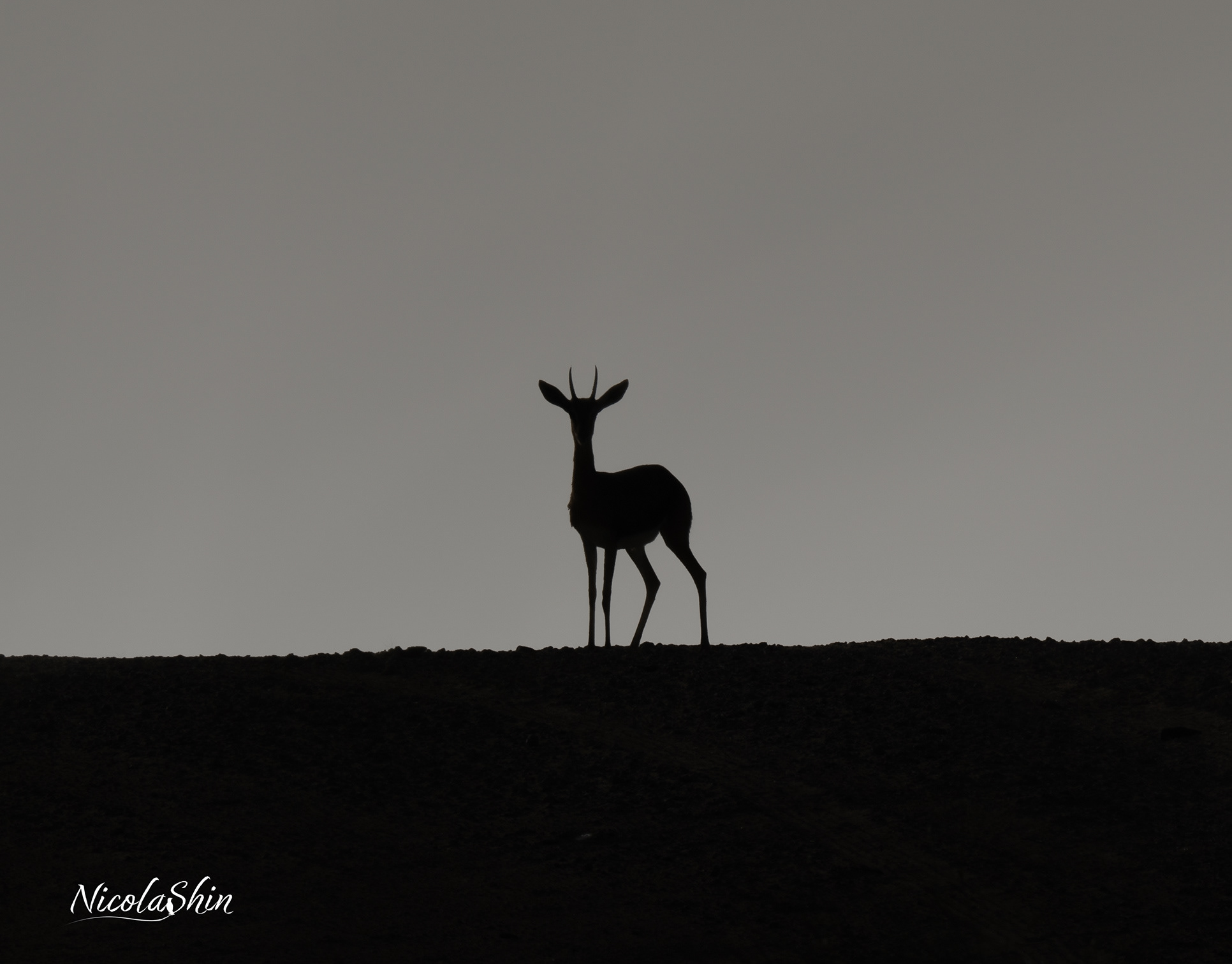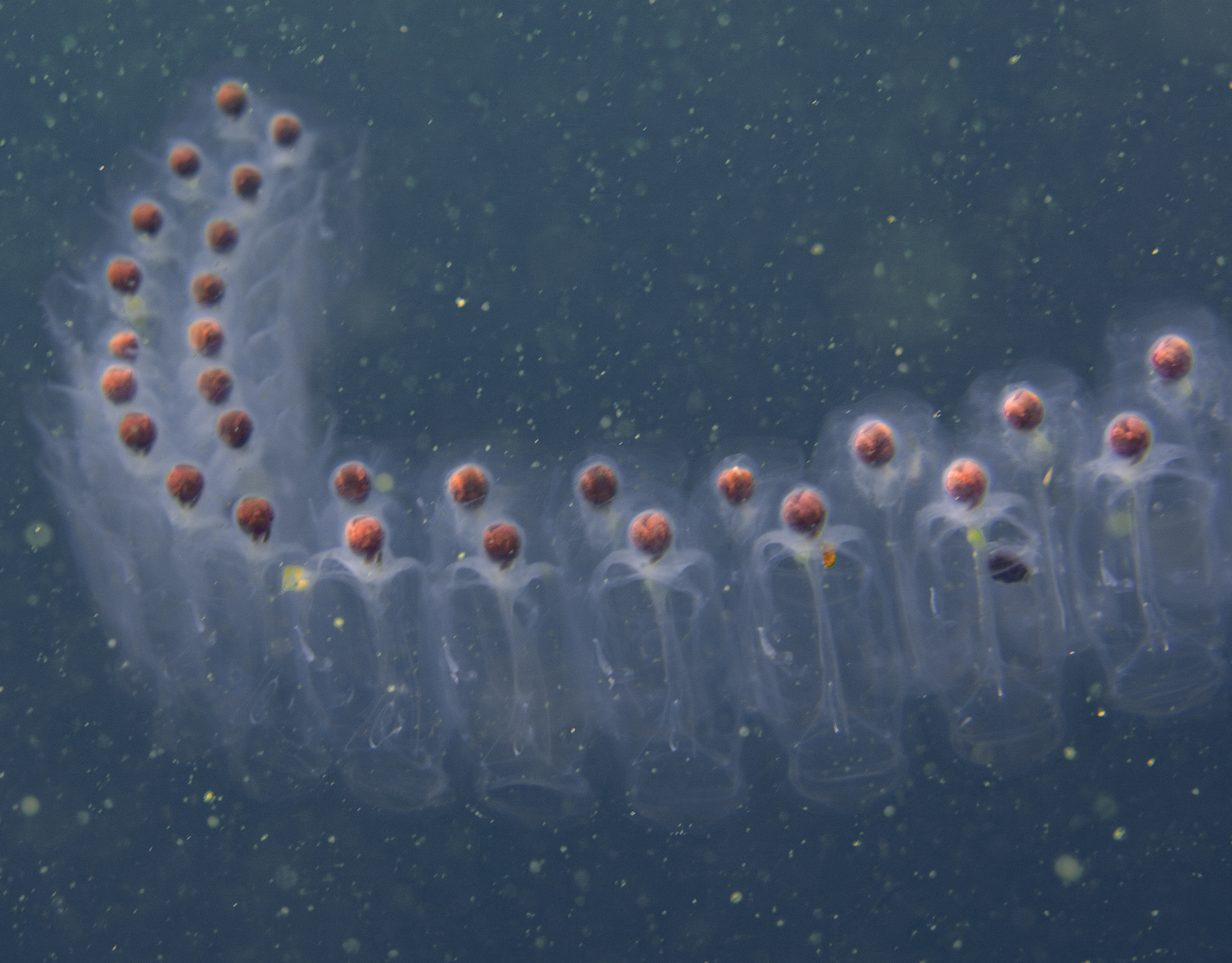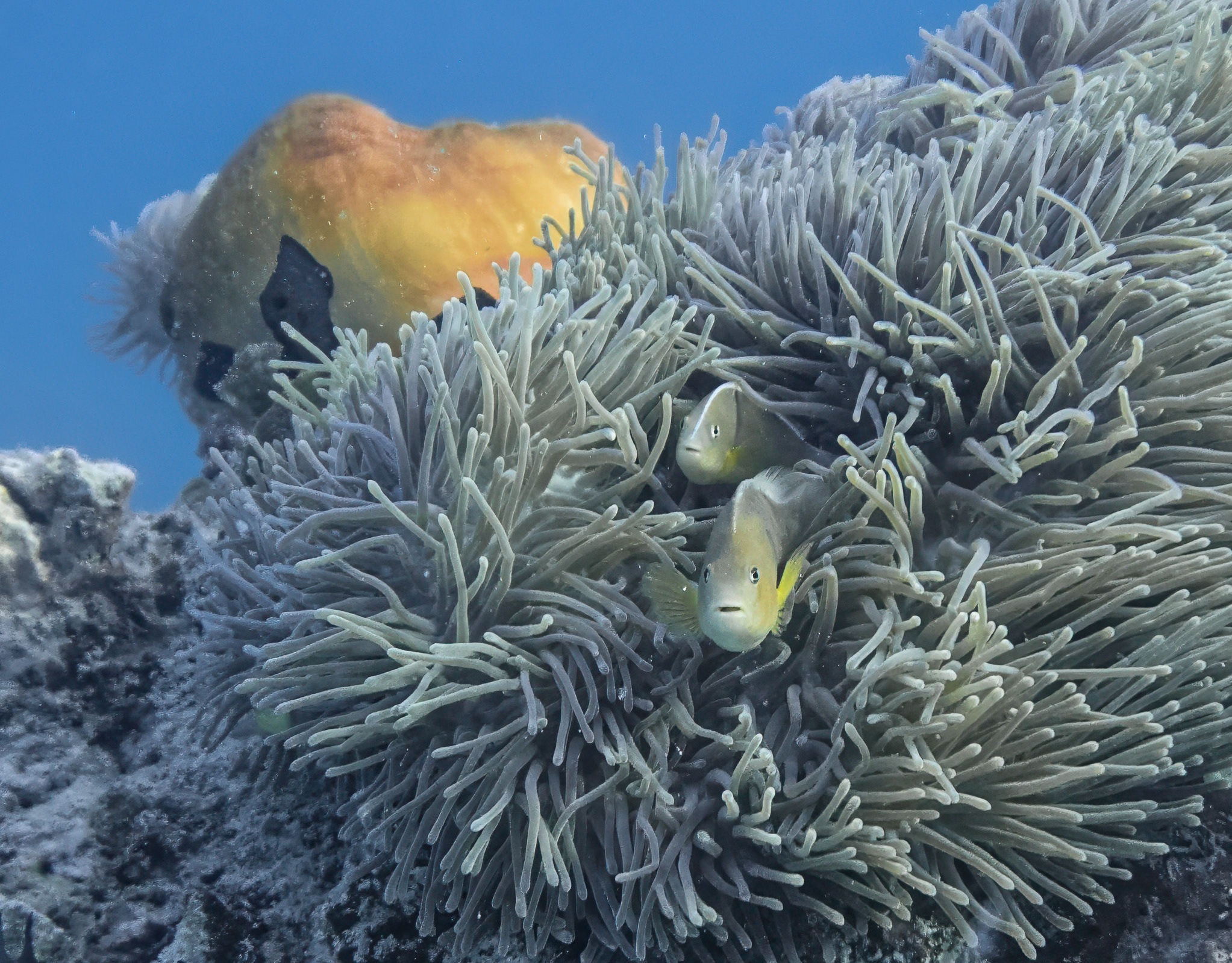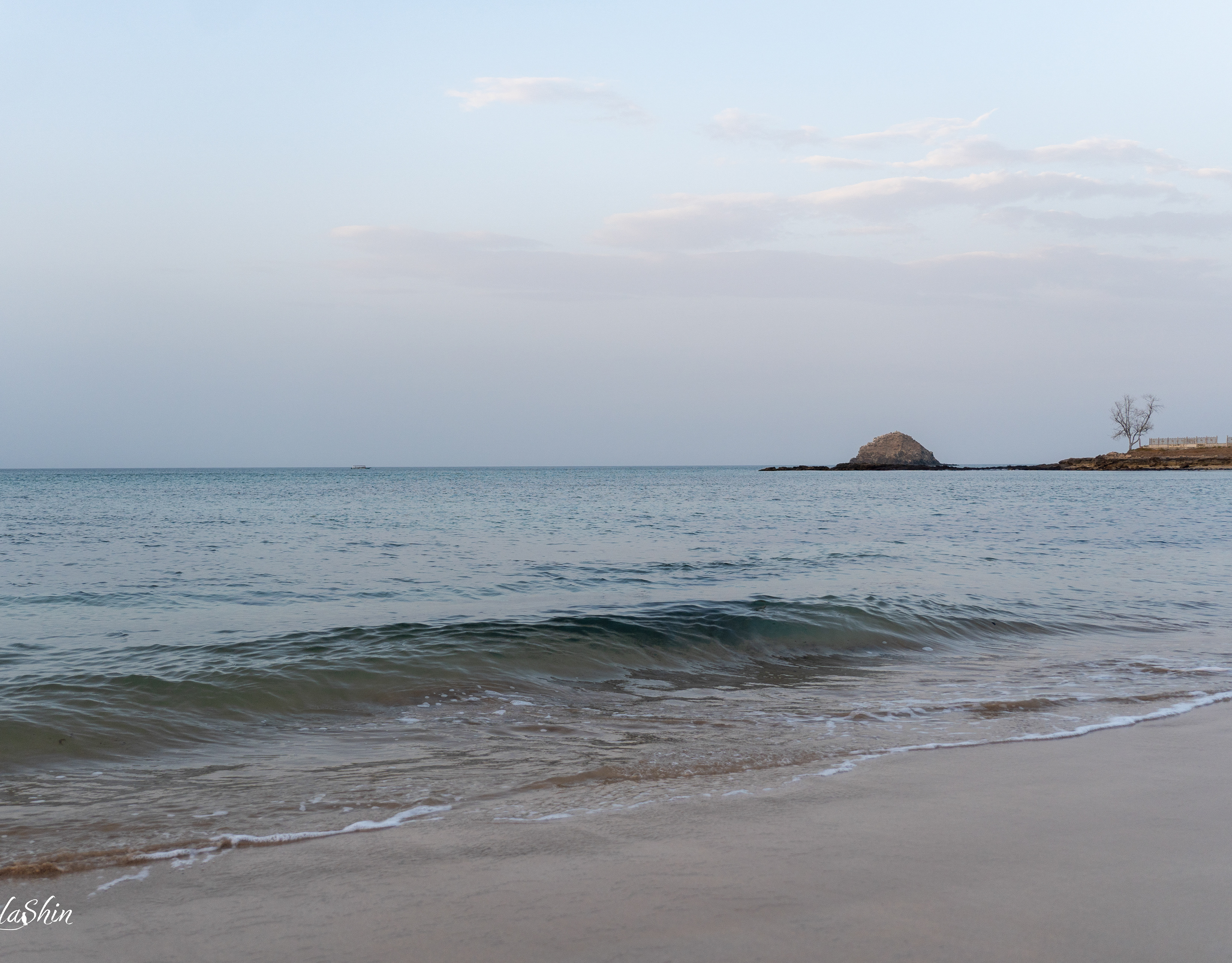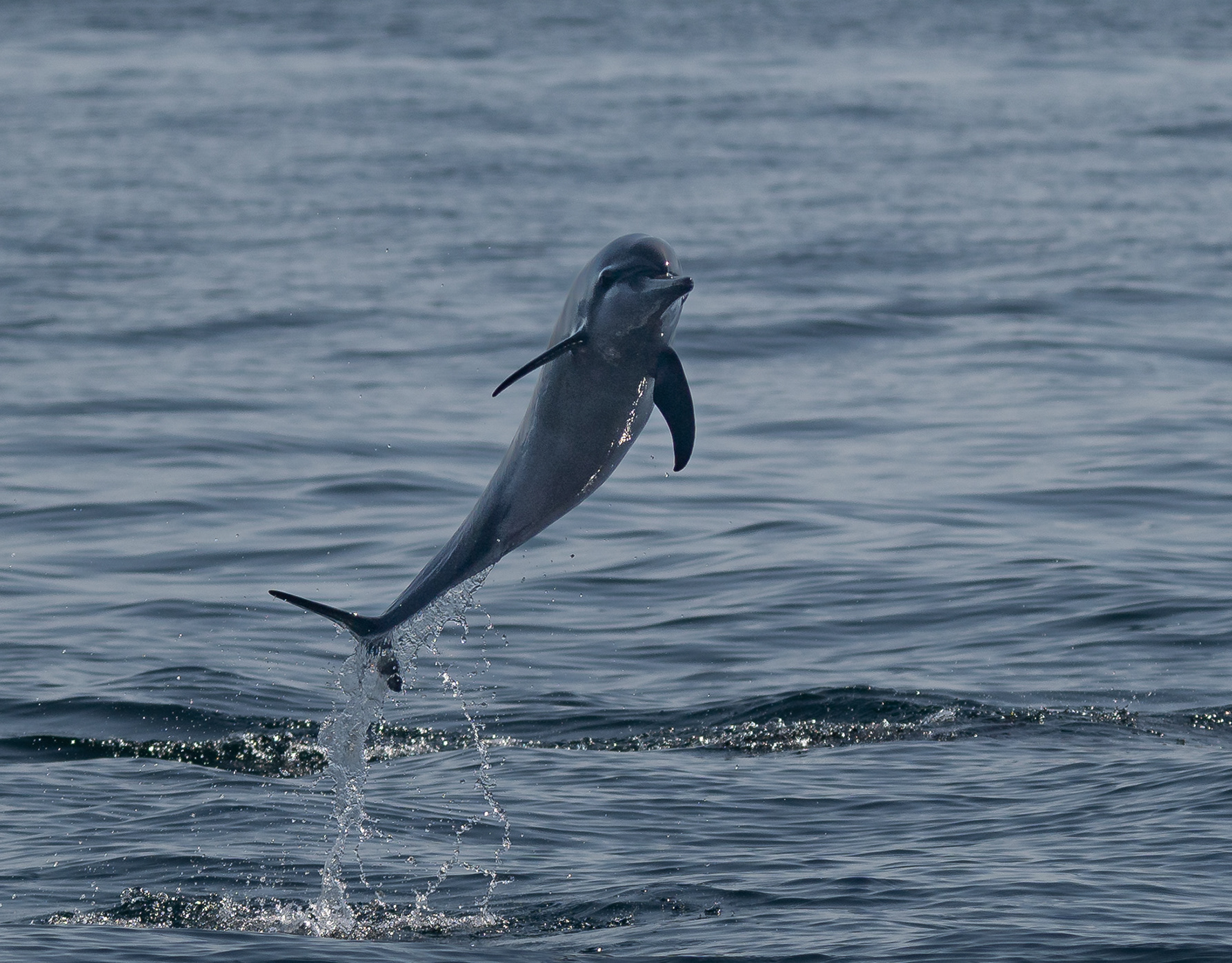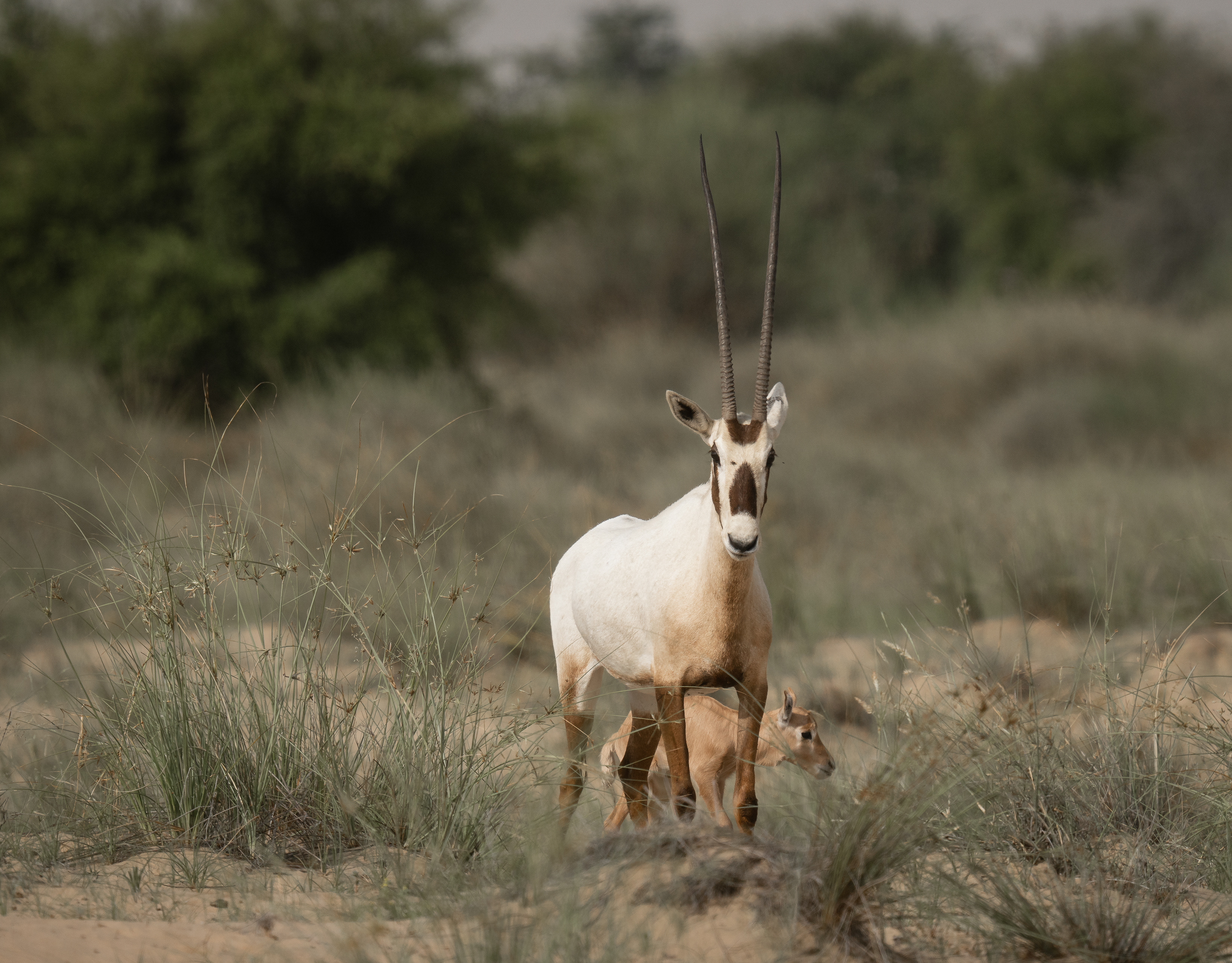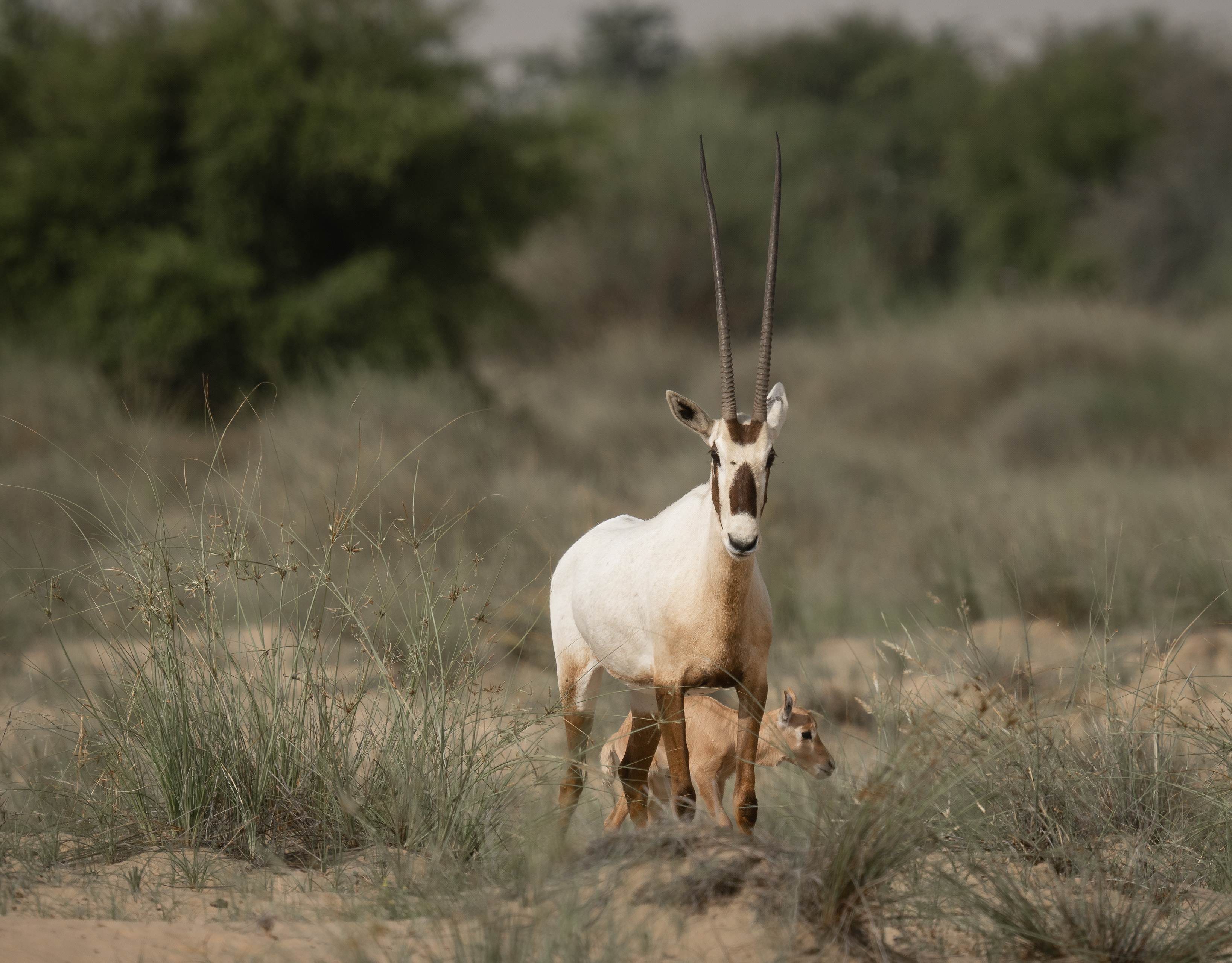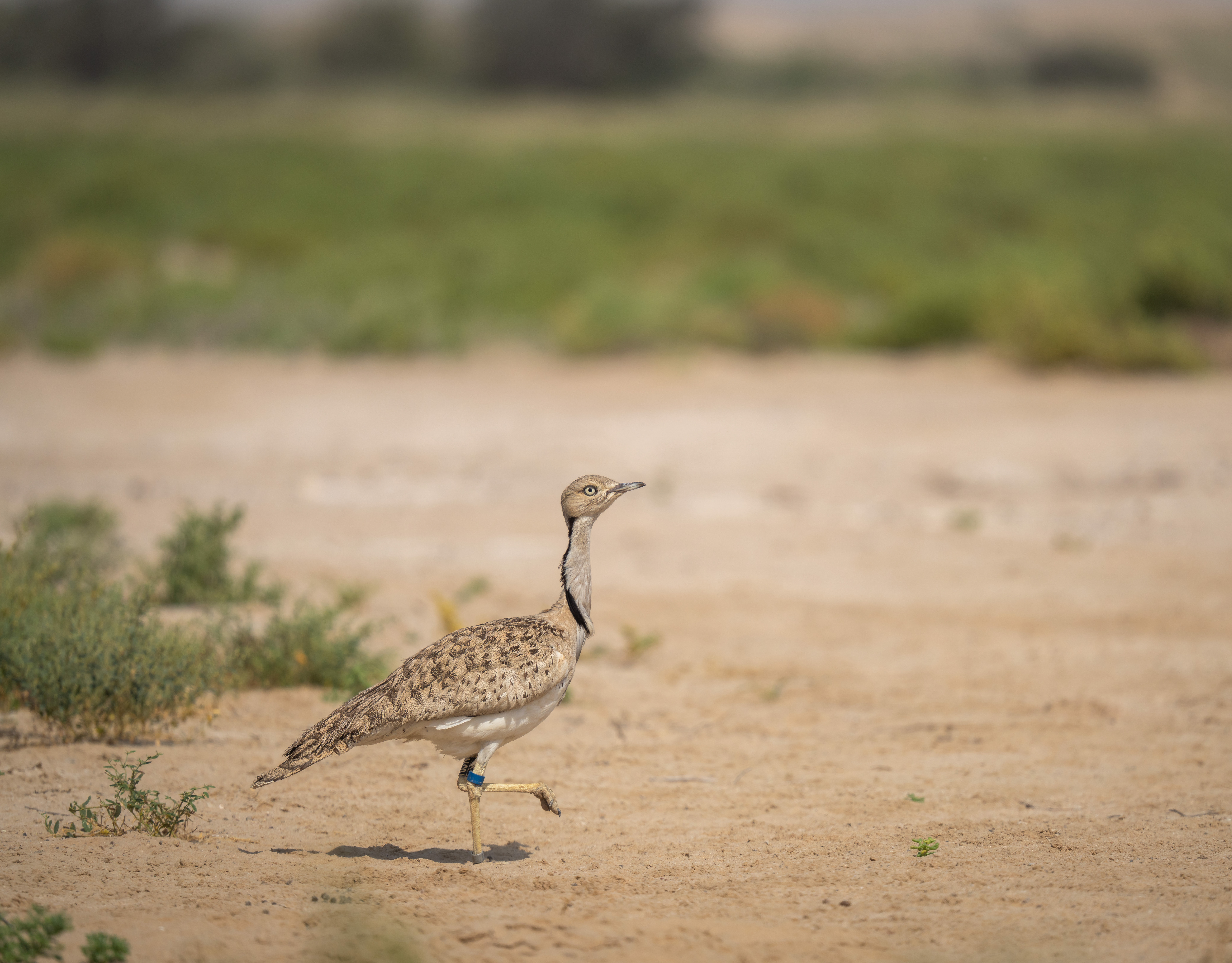August 2023: Under the desert sun, the Dubai Desert Conservation Reserve's sweeping expanse holds secrets waiting to be unveiled. With the golden rays casting a warm glow over the landscape, Maria's voice cuts through the stillness, her words a precise map to the hidden world beneath our feet: "STL-M53, coordinates 24.823922, 55.673424, opening 20x7cm," she intones as I scribble notes sitting in the sand. Beside us, a humble burrow belonging to the enigmatic Spiny-tailed Lizard rests.
Weeks prior, I had clinched second place in an Instagram contest celebrating the mystical spiny-tailed lizard, orchestrated by the Dubai Desert Conservation Reserve (DDCR). As a result, an invitation materialized for me to partake in their ongoing survey, within the reserve's boundaries. And so, on that dawn-painted morning, I found myself joining forces with Maria and Pubudu, ready to unravel the secrets of the spiny-tailed lizard.
Following a brisk drive, we arrived at the first gravel plain on our day's itinerary. Our mission was clear: to locate and study the spiny-tailed lizard burrows. Back in 2020, this area had harbored two. However, after a quarter-hour of wandering and searching, disappointment loomed as we confronted abandoned and collapsed burrows. The rest of the morning brought more success as we located eleven new active burrows.
Spiny-tailed lizard's burrow
The DDCR constitutes a fenced and closely monitored expanse within the Emirate of Dubai, encompassing nearly 5% of the emirate's total land area. Access is restricted, and the prohibition of farm animal grazing serves to fortify the indigenous desert flora and fauna. Furthermore, the reserve stands as a cornerstone of the UAE Oryx conservation initiative. Within its boundaries, a dedicated team of scientists conducts comprehensive surveys of the environment and its wildlife inhabitants. Triennially, the DDCR undertakes a Spiny-tailed Lizard survey, a concerted endeavor aimed at assessing the population's well-being. As the 2023 survey remains in progress, an encouraging revelation emerges: a greater number of active burrows have been meticulously recorded compared to the data from the year 2020. This burgeoning count augurs a promising trajectory for the sanctuary's future endeavors.
The Leptien's spiny-tailed lizard, scientifically designated as Uromastyx aegyptia leptieni, embodies an intriguing narrative within the realm of medium-sized reptiles. Exclusively found in the UAE and Oman, this creature reaches a length of up to 65 centimeters and boasts an impressive lifespan that can span up to 80 years. Its physique is characterized by a robust and flattened body adorned with delicate, textured scales. However, its pièce de résistance undoubtedly lies in its tail, adorned with formidable spines capable of inflicting searing pain upon potential predators. Its plump tail also serves as a repository of vital fat reserves, enabling it to endure periods of scarcity with resilience. Notably, the genus name "Uromastyx" harks back to ancient Greek etymology, signifying "tail" or "whip."
Remarkably adaptive, these lizards possess the ability to alter their skin color throughout the day. In the chill of morning, they adopt a dark grey hue, which efficiently absorbs solar heat, thereby quickly elevating their body temperature. Once their optimal temperature is attained, they transition to a light sandy beige, which reflects sunlight and mitigates the risk of overheating.
These captivating creatures reside in loose colonies on firm substrates such as gravel plains and compacted inter-dune soil, where they deftly construct their intricate tunnel abodes, which can span up to three meters in length. The female of the species lays in its burrow clutches of eggs numbering between 5 and 15, marking a pivotal phase in the continuation of their lineage.
At its core, the spiny-tailed lizard maintains an herbivorous lifestyle, subsisting on a diverse array of desert vegetation, encompassing everything from herbs and shrubs to insects, should verdant sustenance be scarce. This diet is facilitated by their distinctive anatomy—a lengthy, coiled intestine primed for optimal nutrient absorption, showcasing their digestive prowess. The lizard's water needs are met through the consumption of the plants they ingest.
Yet, even within the arid expanse, this creature faces predators. Among them are the Desert Monitor and large raptors, including eagles, which uphold the natural balance within this complex desert ecosystem.
In Arabic, the spiny-tailed lizard is 'dhub', an entity admired for its resilience in the unforgiving desert terrain. Bedouin considered the tail of the Dhub a delicacy which they roast over a fire before eating.
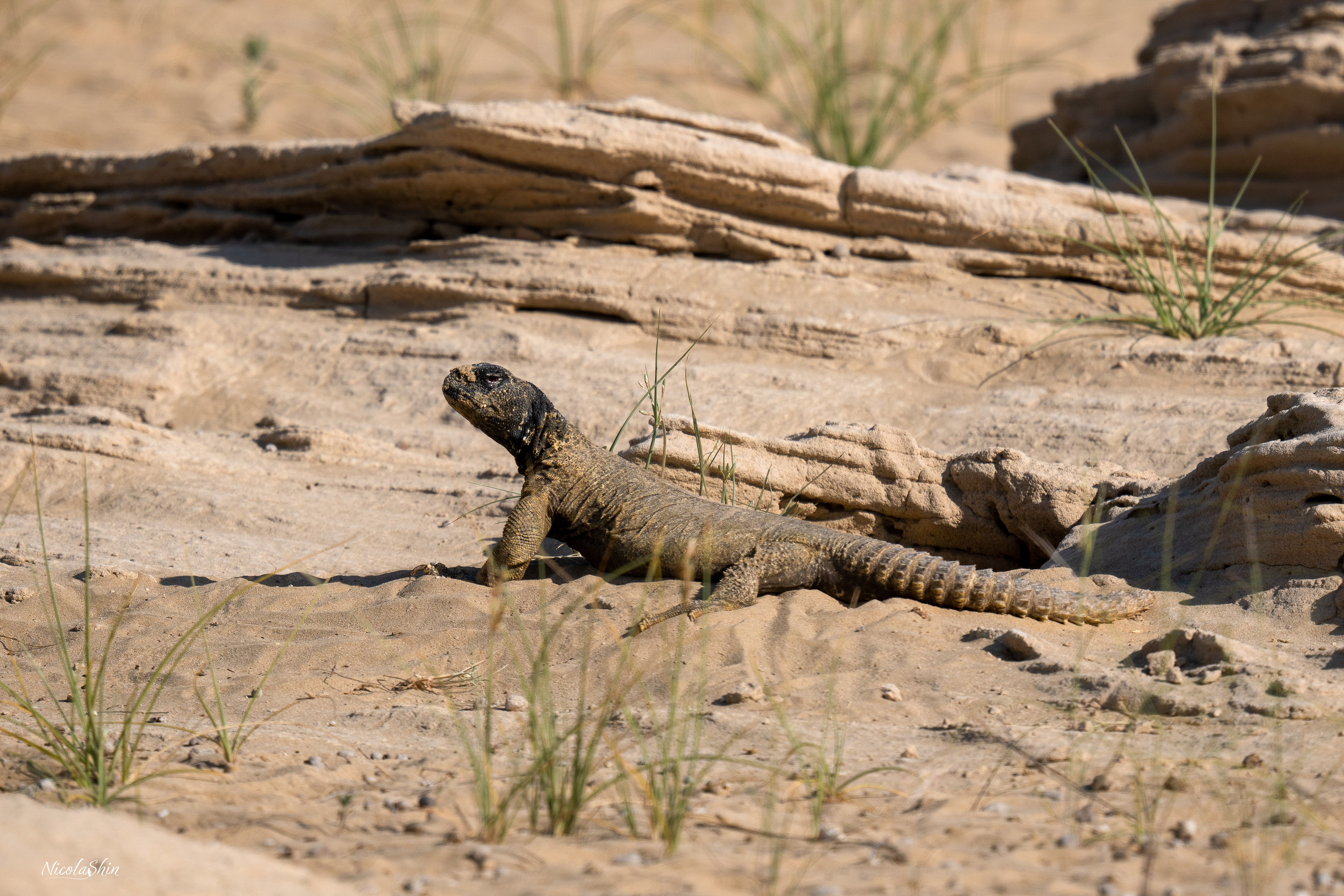
The darker color of the lizard in the morning to absorb solar heat

The sandy beige color to reflect the sun
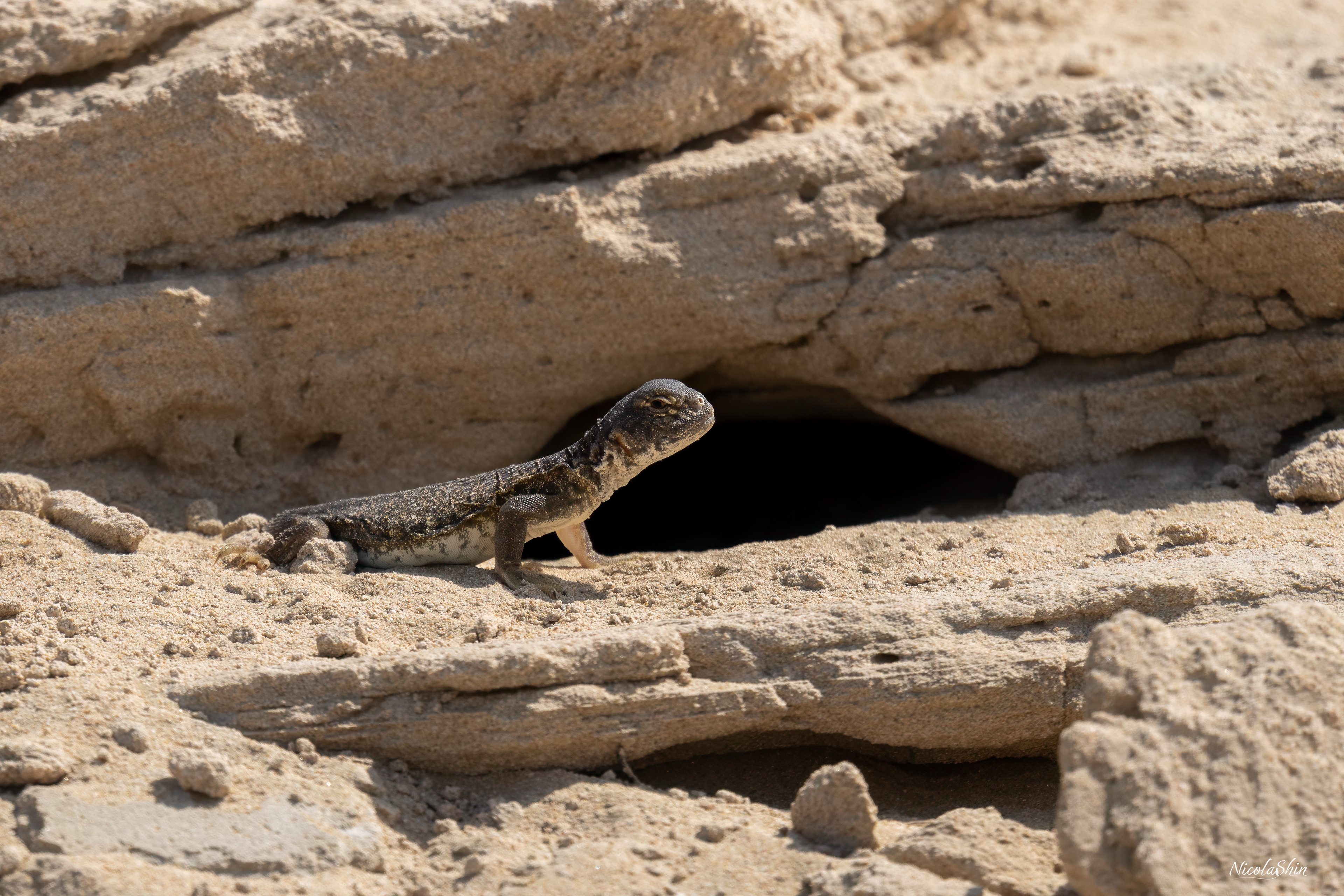
Juvenile in Al Qudra
As the sun ascends in the azure sky, our quest continues. Each burrow is meticulously documented: the precise coordinates of its location, the dimensions of its entrance, and the angle at which it breaches the ground's surface.
Beyond these physical attributes, each burrow's status is documented — newly formed or existing (encountered in the 2020 study). We also decipher their state of activity, discerning whether they are presently inhabited, inactive, or have been abandonned. An active burrow comes to life through the subtle traces etched in the surrounding sands—a dance of footprints and faeces that signify the lizard's recent presence.
However, our narrative extends beyond the burrows themselves. The surrounding landscape offers additional clues that interweave with the lizard's story. We meticulously document the tapestry of the terrain within a meter's radius from each opening. The vegetation and tracks from other animals (smaller lizard, insects, birds...) also become part of our record.
With each piece of data gathered, we piece together a puzzle, slowly revealing the interconnected web of existence in this arid landscape. Each burrow, each track, each fleck of evidence, weaves together a story that stretches across space and time, a tale of adaptation, survival, and the subtle rhythms of life in the seemingly barren sands.

Spiny-tailed lizard faeces
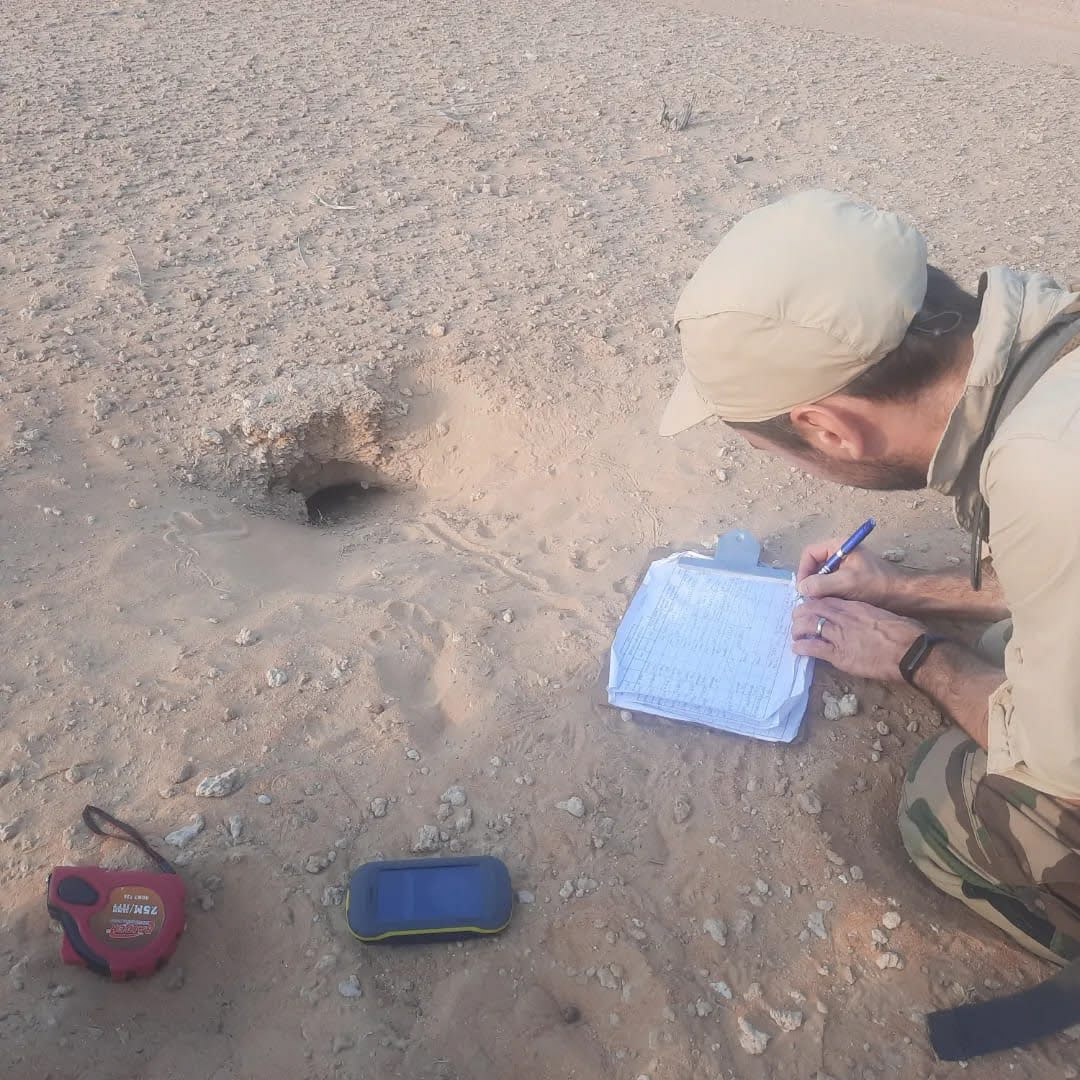
The survey tools: a gps, a ruler and a notepad
Some other encounters of the day:

Arabian Toad-headed Agama

White-spotted Sand Lizard

